Marbella | The Jewel of the Costa del Sol
Marbella is one of the world’s leading hubs of luxury, comfort, beach clubs, and exclusivity. It is not an “undiscovered gem” – everyone has heard of Marbella. Here we get straight to the point.
Geographic and Political Data
Marbella is the crown jewel of the Costa del Sol (Málaga, Andalusia, southern Spain). It is located approximately 60 km from Málaga city center and around 50 km from Málaga-Costa del Sol Airport.

Districts of Marbella
Marbella has several residential areas and districts, each with its own unique character compared to Marbella center:
- Cabopino, Elviria, Los Monteros: Closest to the airport and bordering Calahonda (Mijas) to the east. Primarily residential, featuring supermarkets, golf courses, shopping centers, and above all, tranquil beaches and peaceful neighborhoods.
- Marbella Center: A vibrant city with luxury hotels, affordable options, restaurants, shopping centers, a marina, beaches, squares, a charming old town and more. Marbella is synonymous with glamour, yet offers experiences for all budgets.
- Puerto Banús: If Marbella is the jewel of the Costa del Sol, Puerto Banús is the jewel of Marbella. Famous for luxury yachts, designer boutiques, supercars, and exclusive nightlife. Still, it’s worth strolling through and enjoying its picturesque corners harmoniously blended with nature.
- Nueva Andalucía: Adjacent to Puerto Banús, a more peaceful residential area with golf courses, private clubs, and exclusive urbanizations focused on relaxation and comfort.
- San Pedro & Guadalmina: San Pedro de Alcántara feels like a town within a town, mainly residential with a stronger presence of locals. It offers all necessary services, leisure spaces, and a charming promenade. Guadalmina, located westward near Estepona, is a coastal residential area known for its tranquility.
Population
Marbella has about 160,000 registered residents, spread across its districts such as Elviria, Marbella center, and San Pedro. The population multiplies during peak season, which generally runs from Easter (April) until mid-October.
Topography and Climate
Surrounded by mountain ranges such as Sierra Blanca and Sierra de las Nieves, Marbella enjoys a mild climate throughout the year. Summers are cooler than in nearby Estepona or Málaga, thanks to the lack of hot “terral” winds. However, it receives humid Atlantic fronts, which provide an average annual rainfall of nearly 700 mm – making the region greener than other Mediterranean destinations.
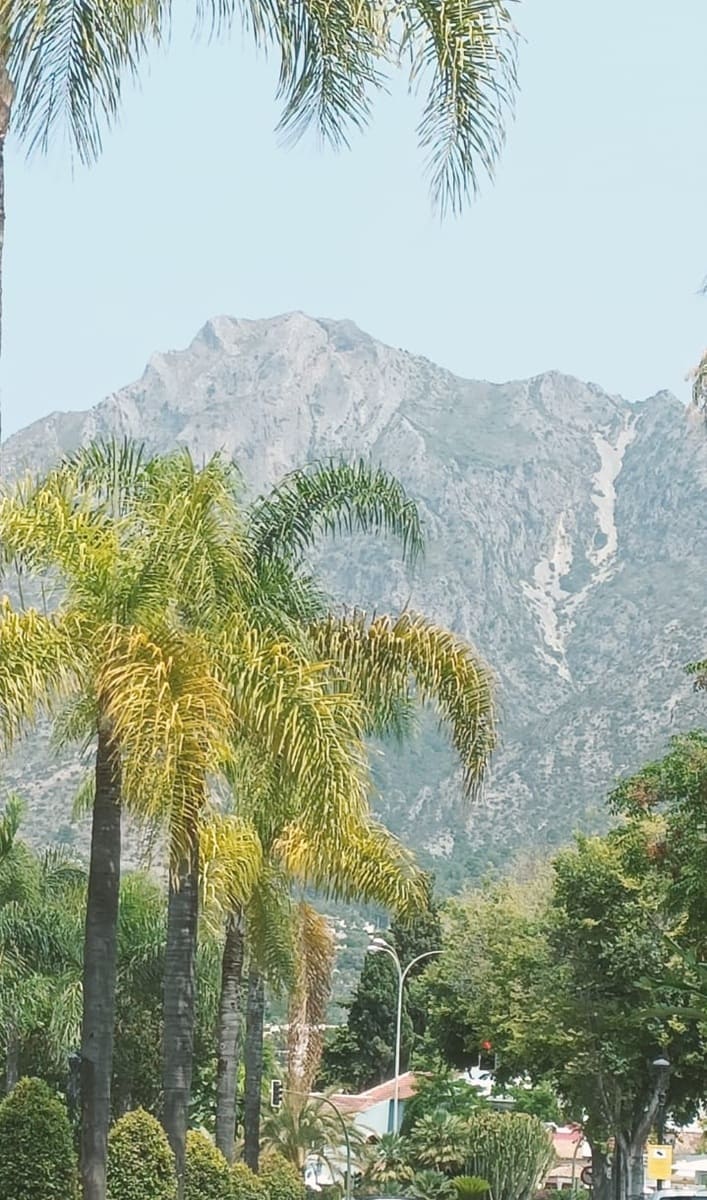
History
Although human presence in the area dates back to the Paleolithic, Marbella as a permanent settlement is historically confirmed since Roman times. Archaeological remains can be found at Río Real, Cerro Torrón, the old town (Calle Escuelas), the Roman Villa of Río Verde, and the Roman baths of Guadalmina. Later, the city followed the same historical path as the rest of Spain: ruled by Visigoths, then Muslims until 1485 when it was taken by the Catholic Monarchs.
19th Century
Marbella was a modest town with its economy based on iron smelting, steelworks, and fishing. It became one of Spain’s pioneers in iron production, supplying up to 75% of the country’s cast iron. However, industrial decline shifted the focus back to agriculture and fishing. Years of droughts and plagues caused unemployment and even famine, marking the late 19th century as a dark period in Marbella’s history.
20th Century
At the start of the 20th century, Marbella’s economy still relied on agriculture and fishing until the Spanish Civil War in 1936. Post-war years were marked by poverty and subsistence living, similar to the rest of Spain.
Second Half of the 20th Century
The turning point came with the tourism boom. Influential aristocrats and celebrities began spending summers here, with Alfonso de Hohenlohe playing a key role by founding the iconic Marbella Club. Throughout the 1960s, Marbella gained an atmosphere of glamour and distinction, soon attracting international elite figures. By the 1970s, Marbella was firmly established as a luxury destination for royalty, celebrities, and wealthy visitors worldwide.
Marbella Today
Today, Marbella is known for its luxury, comfort, seaside tourism and beach clubs, its musical offerings (especially at Starlite), nightlife, and climate… but it’s not all about night parties, sun, beaches, Ferraris, and Louis Vuitton bags. Marbella also offers cultural activities and nature experiences. But let’s be honest, most people come for the sea, beach clubs, expensive restaurants (and thankfully some affordable options too), the Instagram photo, and the chance to come home saying “I was on holiday in Marbella.” Those who have passed the peak of youthful indulgence come for comfort, safety, and the great weather this land offers. However, since the Internet is literally flooded with information about Marbella’s most iconic spots, we’ll just give you a few glimpses of lesser-known but equally interesting attractions.
Gastronomic Offer
Again, we do not aim to be Marbella’s best or most complete gastronomic guide. This is our personal view.
La Casita Marbella
Here I might be a bit biased, but not much. Let me explain why. La Casita Marbella appears to be a simple café in the heart of Marbella, with a small terrace facing the entrance to Málaga port.
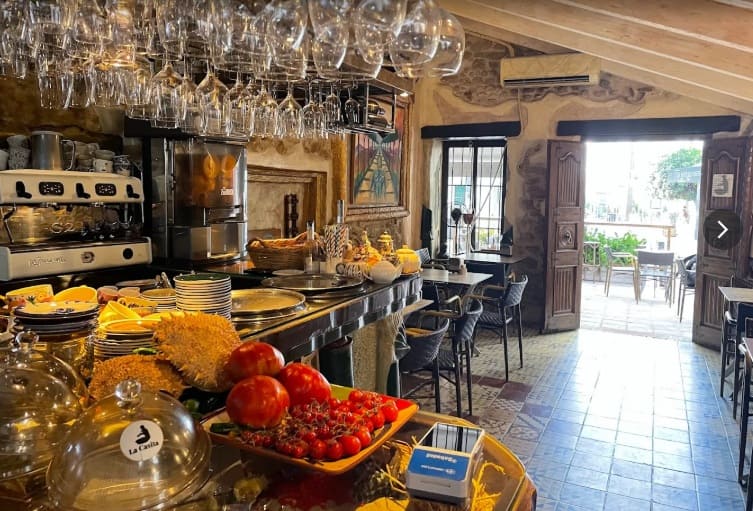
Jesús, the head chef, is a friend of mine. That’s the catch. I met him when he was a chef at Restaurante Puente Romano (Michelin-starred) under Chef Dani García, an international culinary celebrity. Jesús is more than a chef; he is an artist and creator of his own masterpieces. La Casita Marbella, while appearing as a simple café, offers imaginative, author-style breakfasts and lunches with traditional Spanish ingredients prepared in ways and with intensity you’ve likely never experienced before. A true hidden gem: a Michelin-star chef preparing some of the tastiest breakfasts and dishes on the Costa del Sol—don’t miss it.

Restaurante Back
The current chef also comes from Puente Romano and soon earned his own Michelin star. Back offers imaginative cuisine without overly risky experiments. Top-quality ingredients and bold flavors for demanding palates and top-tier wines. A treat that every visitor to Marbella should allow themselves at least once.
La Barbacana
So far we’ve had delicacies and sophistication, now let’s go more “local.” La Barbacana specializes in traditional Spanish home-style cuisine, especially grilled meats. Truly grilled over coals. No culinary pretensions, just authentic Spanish cooking comparable to the best grandmothers in the country. Affordable prices for homemade traditional dishes that immerse you in the most popular and authentic Spanish gastronomy.
Venta Los Pacos
While the previous examples focused on traditional food at accessible prices, Venta Los Pacos offers a complete and authentic cultural immersion into Marbella’s local life. The food is good, but it’s not for delicate palates or haute cuisine lovers. Beyond gastronomy, it’s a time capsule preserving its décor (and likely part of the staff) from the sometimes nostalgic 20th century. You’ll eat well, be treated authentically, and take a journey back in time at a low cost. Worth the experience.
Lesser-Known Corners of Marbella
Again, we won’t talk about beaches, the charming old town, or the beautiful Parque de la Alameda. There are countless sources for that. Let’s explore something more personal.
La Torre Ancón
La Torre Ancón is an 11-meter-tall tower from the 16th century. It was part of the network of watchtowers defending the coast after the Christian reconquest. It’s just another old tower along the coast; nothing spectacular you haven’t seen before. What matters is the context. Located almost midway between Marbella and Puerto Banús, it is somewhat “off the radar,” attracting few visitors even during high season. Off-season, you can enjoy this corner alone, with your thoughts and the surrounding natural beauty.
Puente de Rio Verde
Although close to the border of Marbella and Puerto Banús, it technically belongs to Puerto Banús.
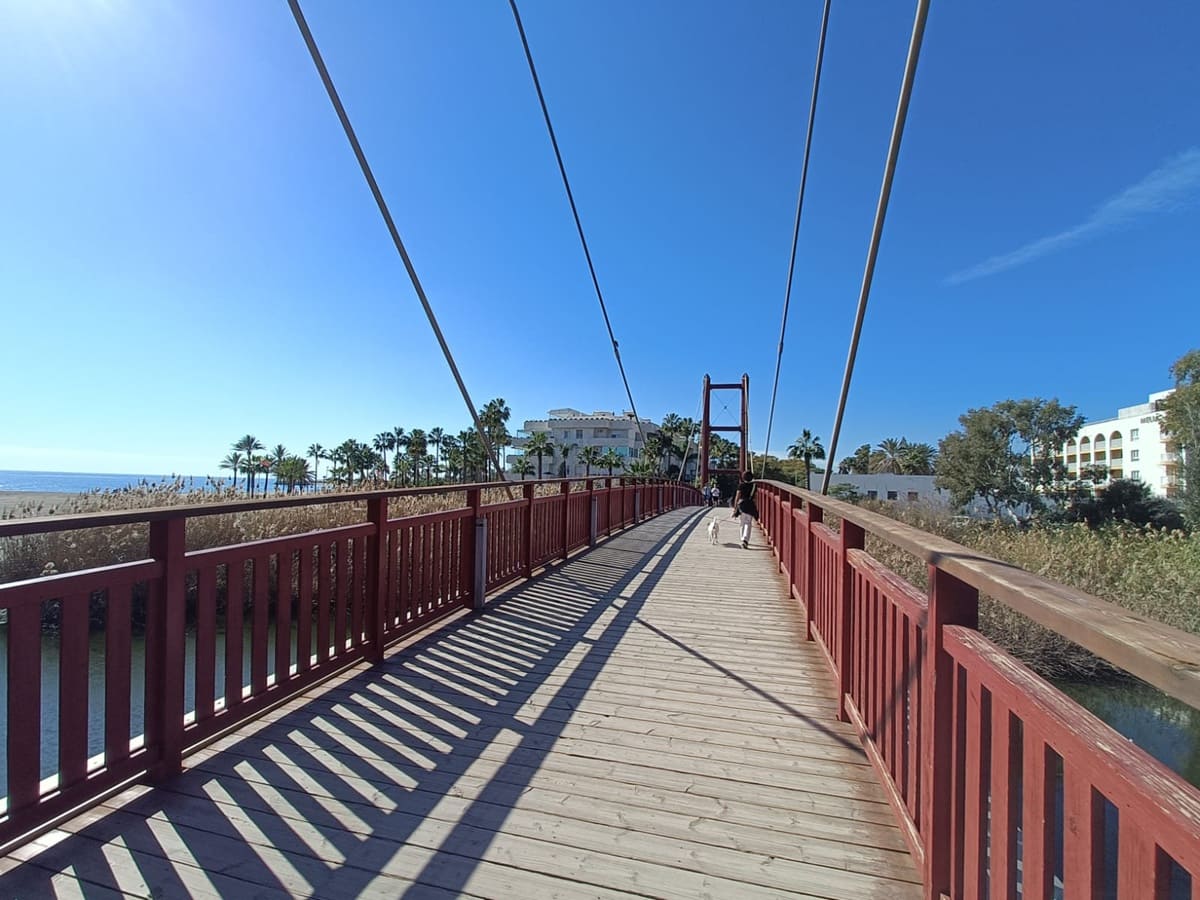
The bridge itself is small and picturesque, more a trickle of water than a river. Beyond its beauty, it is a microcosm of nature and serenity, perfect for reflection when few people are around.
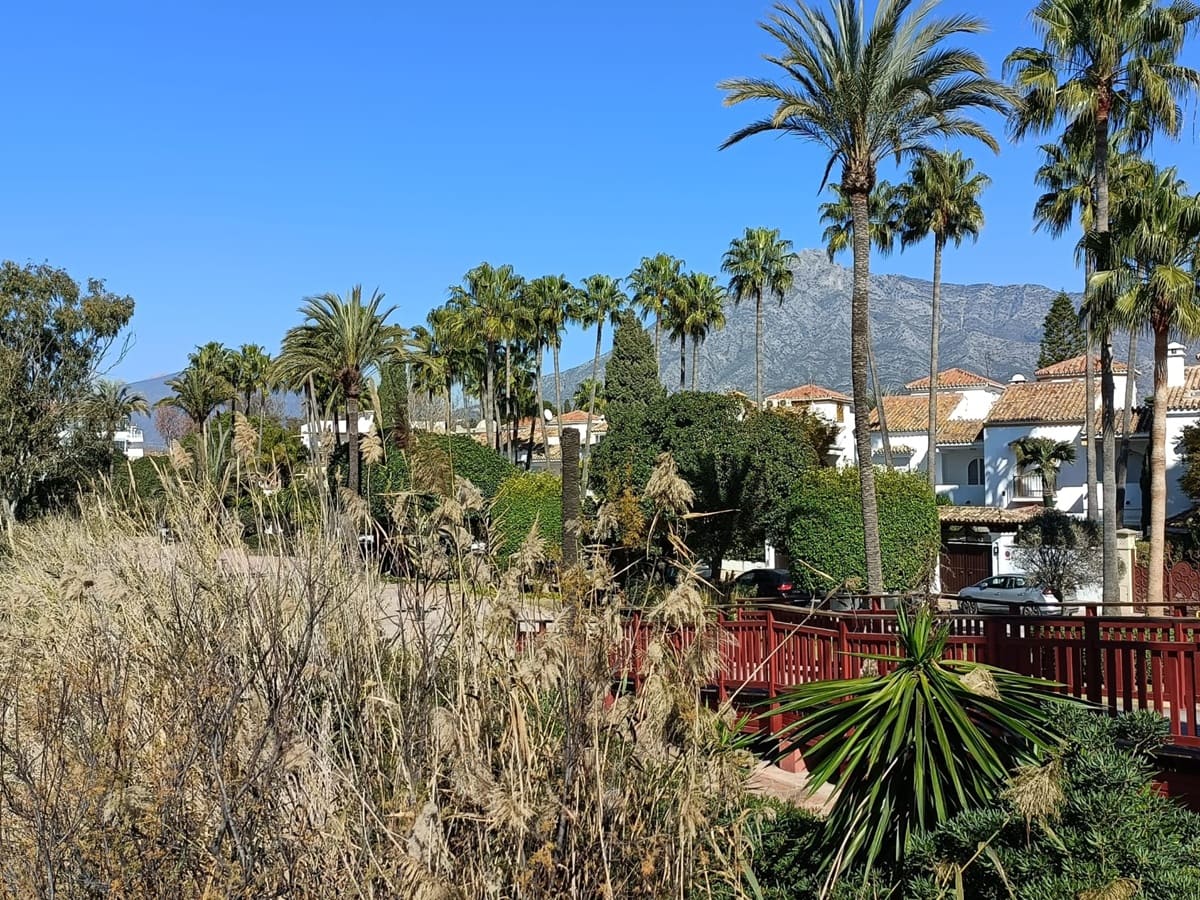
The Marbella Promenade
The Marbella promenade stretches almost uninterrupted for more than 7 km. Towards Puerto Banús, at Nagüeles Beach, you’ll enjoy fewer crowds and scenic views of the sea on one side and some of Marbella’s most luxurious beach club terraces on the other. And of course, the famous Marbella pier, internationally known and photographed millions of times. With the right timing, you can enjoy a beautiful stroll almost alone.
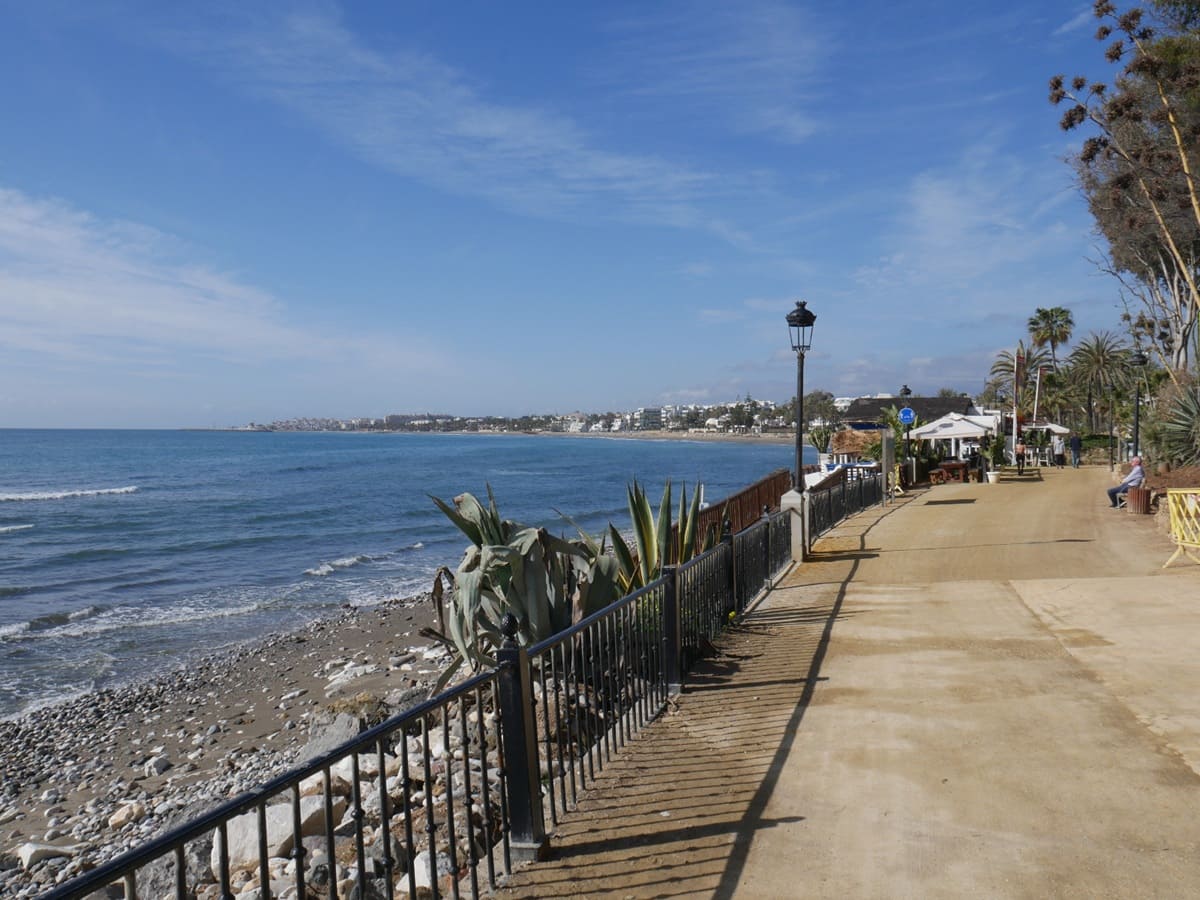
Old Town
Impossible to visit Marbella without wandering its narrow, labyrinthine streets. A microcosm of traditional Andalusian village life, with pedestrian streets, whitewashed walls, small squares, and decorative facades that delight the senses.
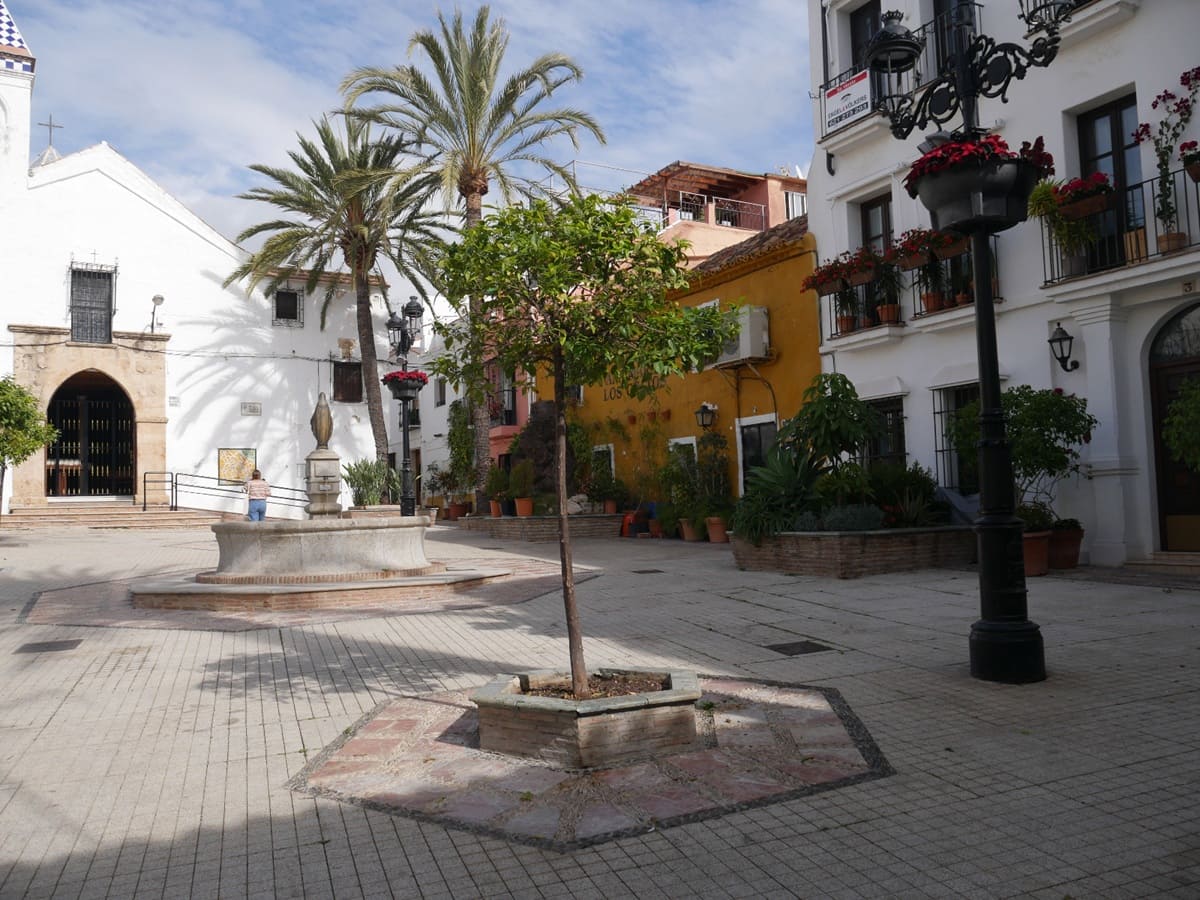
Marina / Puerto Deportivo
Although we wanted to avoid mainstream spots, personally the marina was one of my favorite escape points and, let’s admit it, also a place of fun. Another central point of Marbella that should not be missed.
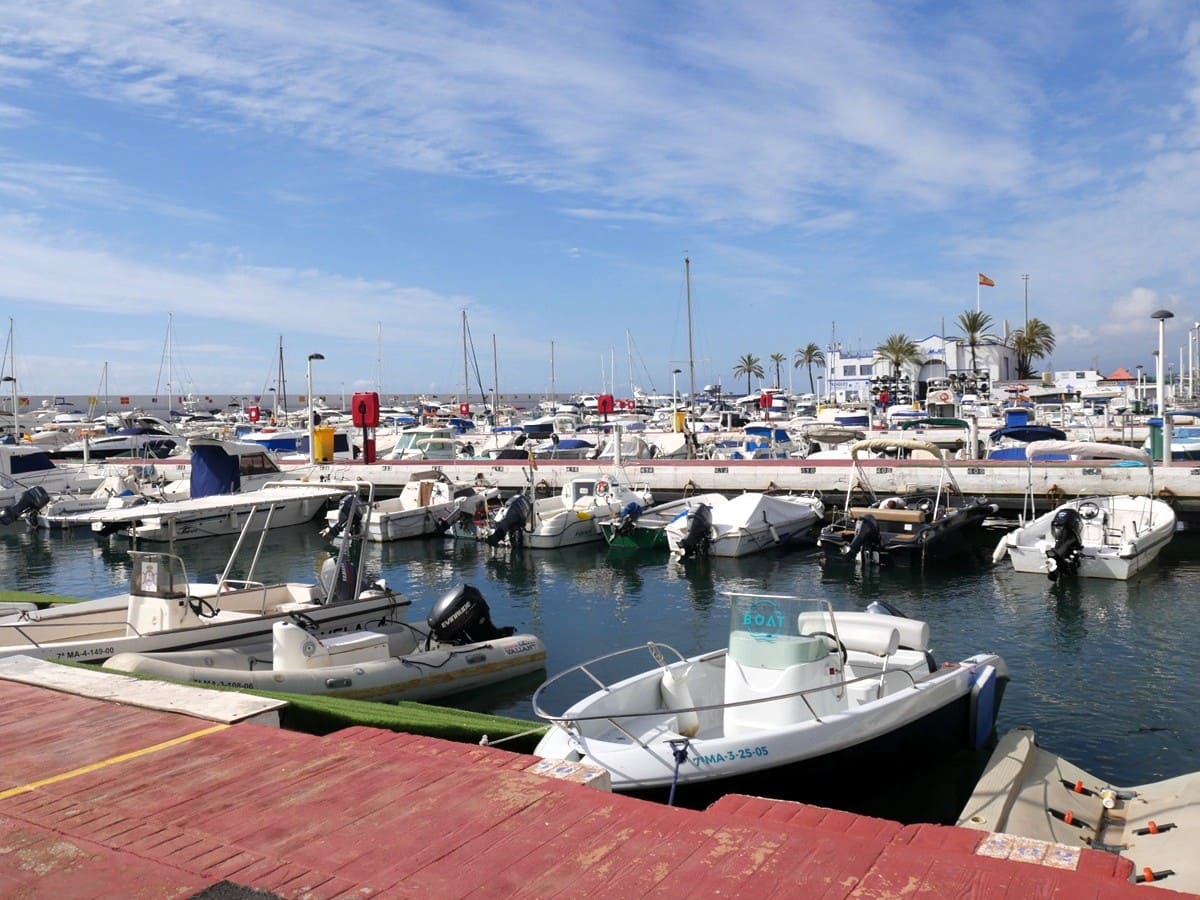
The Surroundings of Marbella
In the unlikely case you’ve already grown tired of everything Marbella has to offer: the historic quarter, the Alameda Park, the Artola dunes and Cabopino, Puerto Banús with its luxury shops, concerts at Starlite, and on and on… what nearby options do you have? Marbella is very well connected, either by bus or with various taxi and private transfer services, so you can easily reach nearby towns that are well worth a visit. Personally, I lean more toward the charm of natural landscapes and streets full of history, so from my own personal perspective, I’ll recommend a few places that, if you share my tastes, you’ll surely love.
Benahavís
Benahavís is located in the mountainous interior, about 20 km northwest of Marbella. From Marbella, you mainly access it via Guadalmina. You can also get there by bus using Marbella’s Line 13. Benahavís combines the Arab heritage and winding street layout (only Montemayor Castle dates back to the 8th century) with some of the most exclusive areas in Spain. From the typical narrow streets with whitewashed houses to the most luxurious hotels, such as the internationally renowned 5-star Anantara Villa Padierna (where First Lady Michelle Obama stayed in 2010). But Benahavís is not just about exclusivity — far from it. Its natural richness allows you to enjoy hikes, rivers, and natural pools if you want to escape from concrete and everyday noise for a while.
Ojén
Even closer than Benahavís lies Ojén, where you’ll find similar ingredients: mountains, nature, forests, and an Arab heritage in the look and layout of its streets and low houses. However, Ojén, because it hasn’t reached the popularity of its neighbors, has remained much more faithful and authentic to its medieval roots — although human settlements there have been confirmed since at least the Neolithic era. Ojén offers simplicity, natural richness, and true disconnection. Well connected with Marbella, you have at least a couple of bus lines to reach it in under 20 minutes.
Estepona
Just over 30 km away, you’ll find the “second capital” of the Costa del Sol. Estepona offers you similar treasures to Marbella but with its own special touch: an old town full of whitewashed houses decorated with flowers, charming plazas, an endless sandy beach, a beautiful marina, the famous Selwo wildlife park, San Luis Castle, and more. Take the bus or enjoy the private transport service MarbeTaxi offers to go and return the same day.
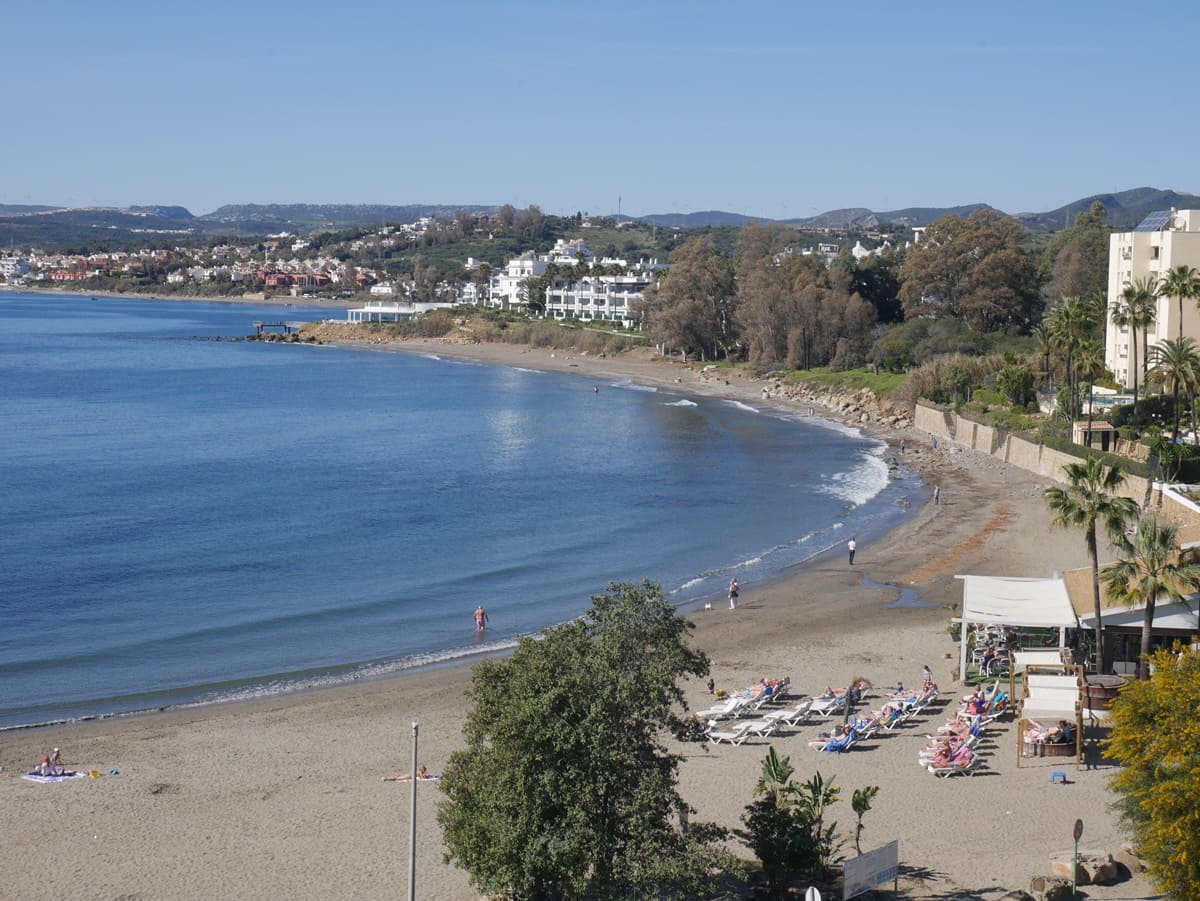
Ronda
A little more than 60 km away lies Ronda — the farthest option, but perhaps the most interesting. Ronda is a true gem. The celebrated Ernest Hemingway, a declared lover of Ronda, once wrote: “It is in Ronda that one should spend one’s honeymoon, or become acquainted with a mistress.” Ronda is folklore, culture, art, tradition, gastronomy, and above all, natural landscapes that will leave you speechless. Ronda is a visit you simply cannot miss if you ever set foot in Málaga province. Make room in your schedule, and when you’re there, looking at the Serranía, the famous Tajo de Ronda, the Arab baths, the historic quarter, the pedestrian center, the bullring, the Alameda del Tajo park, and more… you’ll understand why.
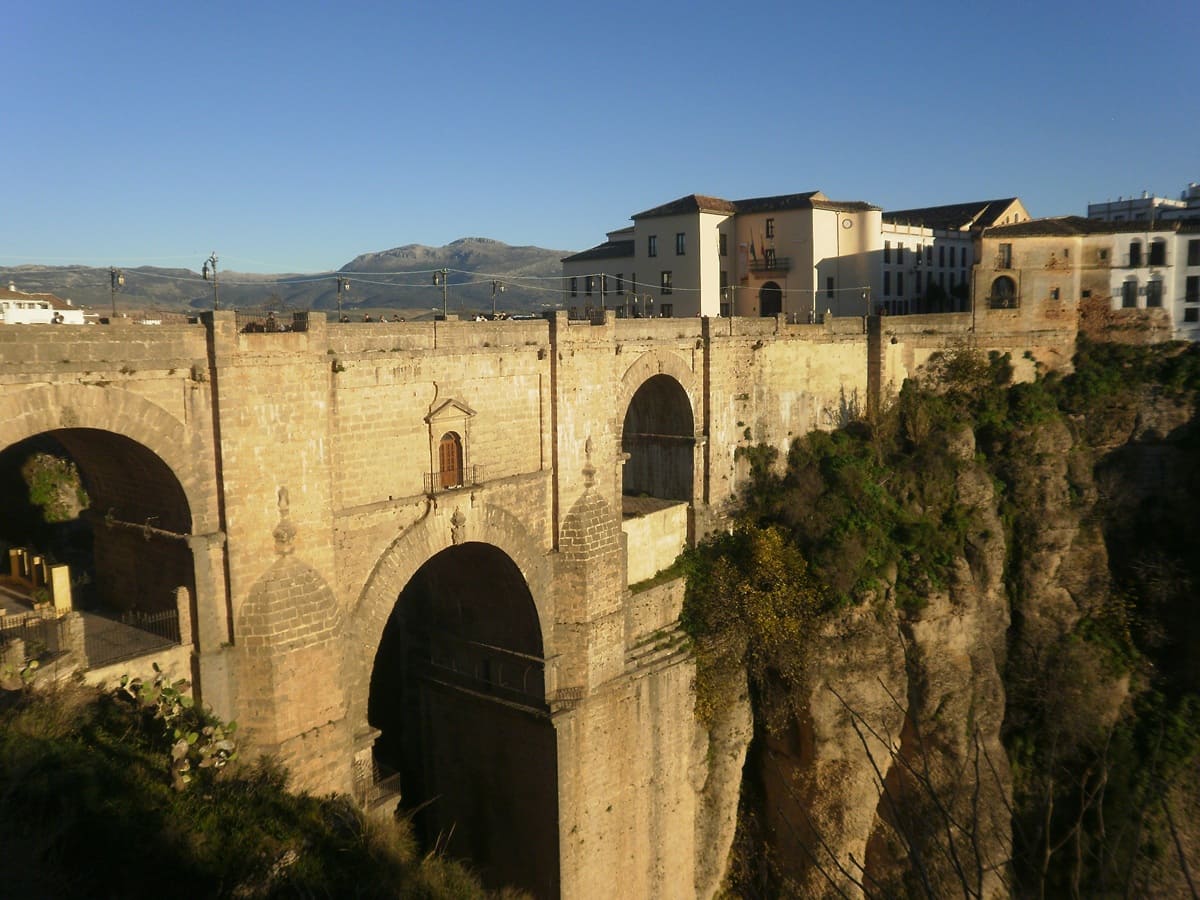
From Marbella to Ronda
You can enjoy your private trip from Marbella to Ronda starting at €110 in a sedan vehicle for 1–4 passengers, with all the comfort and reliability MarbeTaxi provides.
Other Not-So-Nearby Places
If you have time, how could we not recommend spending at least a day or two in Málaga? The political capital of the Costa del Sol and a beacon of Andalusia. How about a trip to Gibraltar, where you’ll feel like you’ve stepped back into the 19th century of overseas Britain? Gibraltar offers unique sights and historical, even legendary, landmarks. Why not go a little further and discover the wonders and spectacular landscapes of Tarifa? In short, you have so much to see and so many places to visit that we could endlessly write about all the points of interest the Costa del Sol has to offer…
How to Get to Marbella
To reach Marbella, you don’t have many options — but it’s undeniable that its connections are excellent.
From Málaga
Málaga city is the usual gateway to the Costa del Sol. Mainly through its international airport, but also thanks to the many ferries and cruise ships docking at its port, Marbella is accessible only by road.
Málaga Airport
From the airport, you have direct buses through semi-public or private companies, or you can take a regular taxi from the official taxi rank at the airport. Alternatively, you can book a private transfer with MarbeTaxi starting at €72 for a sedan vehicle (1–4 passengers). With MarbeTaxi, you’ll enjoy comfort and reliability, including a Meet & Greet service inside Málaga Airport arrivals hall, with a fixed price, no surprises, and no hidden extra costs.
Málaga Port
If you arrive by sea, you’ll need to travel to the bus station to catch a bus to Marbella or take one of the many taxis available at the Port. Again, with MarbeTaxi you can book your private transfer with a fixed price — in this case, €82 for 1–4 passengers in a sedan vehicle.
From Gibraltar
Some travelers prefer to fly into Gibraltar Airport. From there, you can take a bus to Estepona and then change buses to Marbella. Another option is a regular taxi from the Gibraltar border (Spanish side). But with MarbeTaxi, you’ll get maximum comfort and a fixed price for your private taxi transfer from the Gibraltar border to Marbella — just €105 for a sedan vehicle (1–4 passengers).

Conclusion
Marbella is the jewel and pride of the Costa del Sol. But let’s not fool ourselves — it’s far from being the only wonder, nor does it hold all the most fascinating ones. Fortunately, while Marbella is a marvel in itself, the province of Málaga is so rich in charm and beauty that even in 10 lifetimes you wouldn’t tire of it. If you’ve chosen Marbella as your holiday destination, we applaud your excellent taste — enjoy it to the fullest! But don’t overlook all the other treasures waiting to be discovered around you.
Warm regards!
